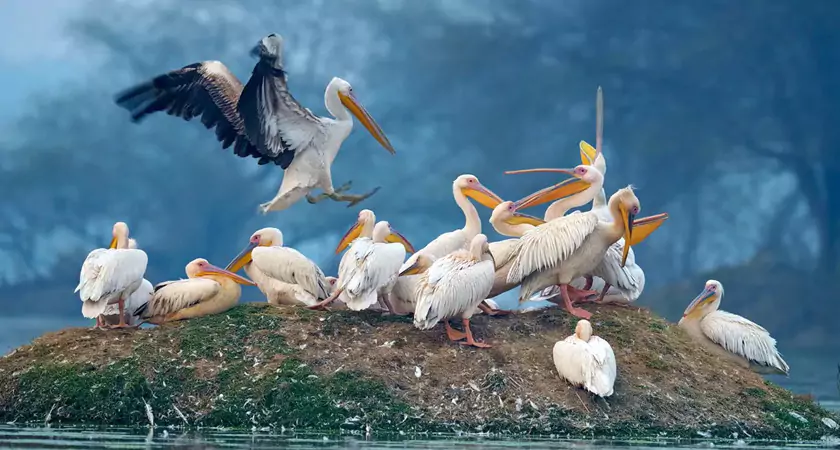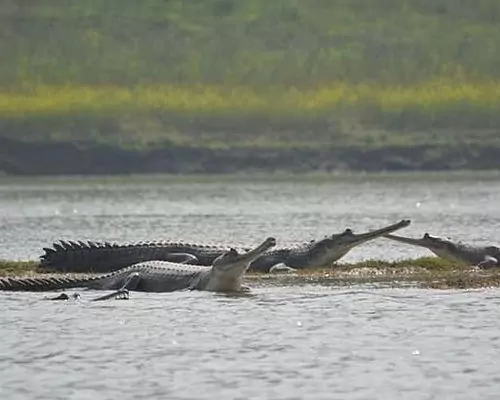Keoladeo National Park - Smart Wetland Model
In the year 2024–25, one of the major improvements at Keoladeo National Park was the reconstruction of the Black Top (BT) road. This redevelopment significantly improved accessibility for tourists, allowing for a smoother travel experience within the park.
- Prior to this, the poor condition of the road posed challenges for visitors, especially during the monsoon season. Alongside the reconstruction, the park authorities also prioritized the maintenance of older tracks.
- These efforts ensured that while infrastructure was modernized, the ecological balance of the park remained undisturbed.
Digitalization and Eco-Initiatives
- To promote sustainable tourism and reduce environmental impact, the park introduced a QR code-based digital ticketing
- This allowed visitors to book their entry tickets online from any location, eliminating the need for paper-based tickets and reducing long queues at the entrance.
- In addition to digitalization, the park installed solar-powered water pumps for its staff.
- This move aligns with eco-sensitive practices, reducing the park’s dependence on non-renewable energy sources and supporting environmentally sustainable operations.
Water Management Innovations
- The availability and management of water are critical to the health of the park’s wetlands.
- In 2024–25, water was supplied from the Panchana Dam to ensure that the park’s wetlands remained vibrant and capable of supporting a diverse range of flora and fauna.
- Looking forward, the park plans to automate the operation of sluice gates and install water-level measuring instruments across the wetlands.
- These innovations will enable more precise control and monitoring of water resources, which is vital for wetland ecosystem management.
Habitat Restoration and Biodiversity Protection
- To restore the natural habitats within the park, efforts were made to remove invasive plant species from the grasslands.
- This has helped create a more suitable and natural environment for native species, particularly birds.
- Furthermore, the park has adopted Boma technology — a humane and efficient method for capturing and relocating animals such as the Indian spotted deer (Chital).
- This technology ensures that animal transfers are conducted with minimal stress and maximum safety, demonstrating the park’s commitment to ethical wildlife management.
Inclusive & Accessible Tourism
- Inclusivity in tourism has been given special attention at Keoladeo National Park.
- In 2024–25, golf carts were introduced to assist senior citizens and differently-abled individuals in exploring the park comfortably.
- This initiative ensures that all visitors, regardless of age or physical ability, can experience the beauty of the sanctuary.
- Further, the park’s future development plan includes building additional restrooms, refreshment centers, and resting areas to improve the overall visitor experience.

Community Involvement – ‘Wetland Mitra’ Initiative
- The ‘Wetland Mitra’ initiative has been launched to involve local communities and students in wetland conservation efforts.
- Through this program, residents and youth are encouraged to participate in conservation activities, thereby fostering awareness and a sense of environmental responsibility.
- This grassroots approach ensures long-term sustainability and strengthens the bond between the local population and the natural environment they help protect.
Vision and Long-Term Goals
- The long-term vision of Keoladeo National Park is to develop into a “Smart Wetland Model” that blends technology, ecological conservation, and community participation.
- With upcoming plans to install bird identification cameras, automate sluice gate operations, and monitor water levels digitally, the park aims to become a leading example of how modern technology can enhance the management of protected natural spaces.
Keoladeo National Park represents a successful case of balancing conservation with tourism. Through thoughtful infrastructure upgrades, digital innovations, ecological restoration, and inclusive practices, the park is setting a new standard for protected areas in India. Its integrated approach not only preserves biodiversity but also engages communities and enhances visitor experiences — a model worth replicating nationwide.













